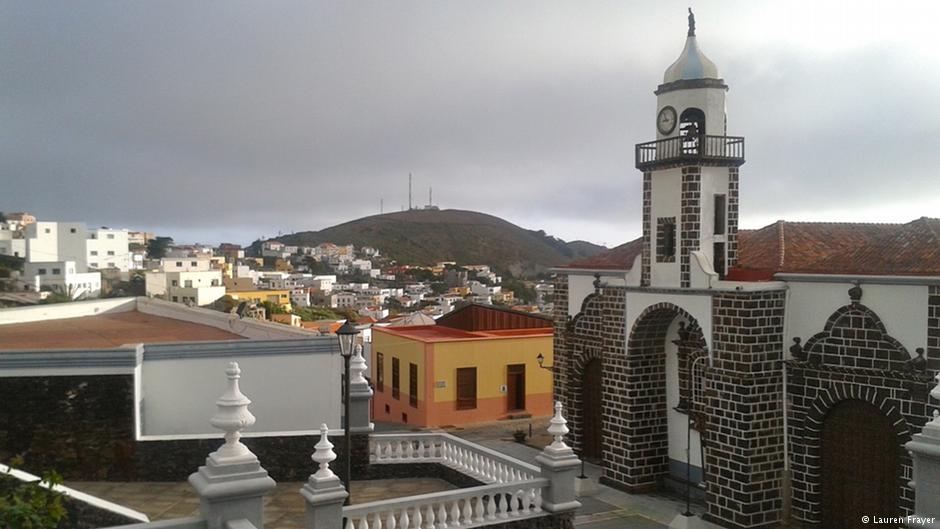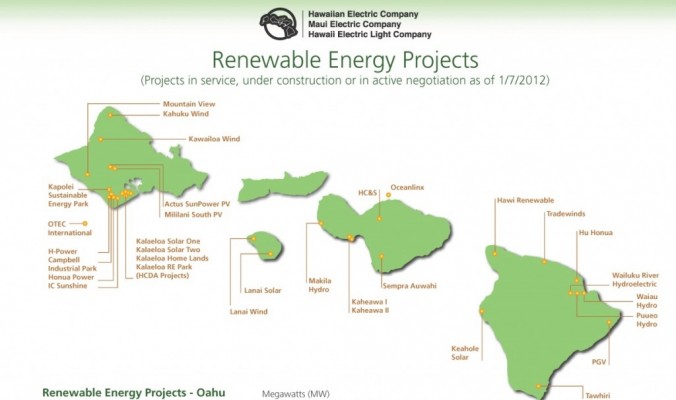On Monday, June 8, 2015, Hawai’i Governor David Y. Ige signed into law four energy bills, including House Bill 623, which will “strengthen Hawaii’s commitment to clean energy by directing the state’s utilities to generate 100 percent of their electricity sales from renewable energy resources by 2045,” according to the press release by the Governor’s office. This remarkable measure will make Hawai‘i the first state in the country to have a 100 percent renewable energy portfolio standard (RPS) for the electricity sector.
Hawai’i: 100% Renewable Energy by 2045
Hawai’i, as a state made up of islands, has traditionally generated most of its electricity from fossil fuels, especially petroleum imported from off-island. This has led to the state having the highest electricity rates of any state in the country (though even higher rates can be found in the territories). According to the U.S. Energy Information Administration (EIA), as of March 2015, Hawai’i’s average electric rates per kilowatt-hour (kWh) were:
- 31.20 cents/kWh (residential)
- 28.14 cents/kWh (commercial)
- 23.79 cents/kWh (industrial)
- 27.23 cents/kWh (average of all sectors)
Compare this with the national average across all sectors of 10.30 cents/kWh, and one can easily see how Hawai’i, based on cost factors alone, has a strong incentive to switch its electricity generation over to local, renewable energy sources. Indeed, according to the EIA, Hawai’i’s average across all sectors has declined in just one year (since March 2014) from 34.80 cents/kWh, a 22% reduction – which is very likely attributable in no small part to reducing volatile fuel costs from imported petroleum.
Attaining their goal of becoming the first state to transition entirely to renewables is ambitious, and will take time. As HB 623 states (updating their previous version of the RPS, which had a goal of 40% renewable energy generation by 2030), the planned phase-in for Hawai’i will proceed in phases:
| Renewable energy as a % of net electricity sales | Required by this date |
| 10% | 12/31/2010 |
| 15% | 12/31/2015 |
| 30% | 12/31/2020 |
| 40% | 12/31/2030 |
| 70% | 12/31/2040 |
| 100% | 12/31/2045 |
As reported by CleanTechnica, Hawai’i is ahead of schedule, having already reached 21% of its electricity supply generated by renewables. Governor Ige states that “As the most oil dependent state in the nation, Hawai‘i spends roughly $5 billion a year on foreign oil to meet its energy needs. Making the transition to renewable, indigenous resources for power generation will allow us to keep more of that money at home, thereby improving our economy, environment and energy security,”
Other Islands around the World Going 100% Renewable

Hawai’i’s big move to renewables is by no means unprecedented for island states, territories, or nations. For example, the Spanish island of El Hierro, part of the Canary Islands, in the past year became the first inhabited island in the world to be powered entirely by renewable energy while not hooked up to a mainland electrical grid. El Hierro uses a combination of wind and hydro power to generate all of the electricity needs for the island.





Leave a Reply